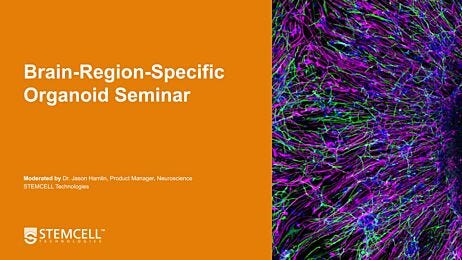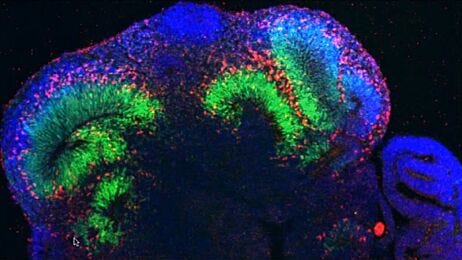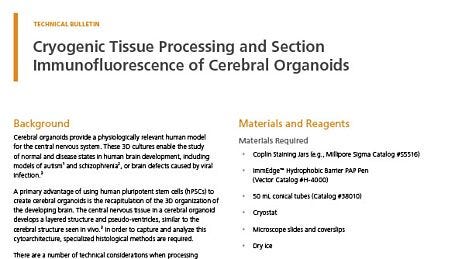How to Choose Your Neural Organoid Model System
Human pluripotent stem cell (hPSC)-derived neural organoids offer unique opportunities to study the human brain using physiologically relevant and complex 3D models. Neural organoid differentiation strategies may be broadly classified into two major types of methodologies–patterned and unpatterned. Depending on the desired downstream application or readout, one (or both) of these options may provide a powerful tool to help you address exciting new research questions.
Patterned Neural Organoids
Patterned neural organoid strategies rely on directed differentiation using small molecule patterning factors to generate specific brain regions of interest.
Key Features & Applications:
- Highly reproducible and homogeneous structural morphology for greater study sensitivity
- Easily scalable with AggreWell™ for high-throughput applications to generate hundreds of organoids in a single batch
- Ideal for:
- Studying inter-organoid interactions by generating assembloids1,2 (modular combinations of different patterned organoids into one system)
- Co-culturing with hPSC-derived microglia to model neuroinflammation
- High-throughput screening
For more information and protocol details, please refer to the product pages for STEMdiff™ Dorsal Forebrain Organoid Differentiation Kit and STEMdiff™ Ventral Forebrain Organoid Differentiation Kit.
Unpatterned Neural Organoids
Unpatterned neural organoid strategies allow differentiation to occur spontaneously, without the addition of specific patterning factors.
Key Features & Applications:
- Rich cellular and structural diversity obtained
- Multiple brain regions generated within a single organoid
- Amenable to culturing within Matrigel® droplets or in liquid Matrigel® conditions
- Ideal for:
- Studying intra-organoid interactions between brain regions
- Modeling spontaneous neurodevelopment3
- Using as a platform for generating new or modified organoid models (ie. choroid plexus4)
- Infectious disease research
For more information and protocol details, please refer to the product page for STEMdiff™ Cerebral Organoid Kit.
Still unsure which model is right for your research? We can help. Contact us by phone or email or use the LiveChat function on this page to discuss your specific needs and applications.
Related Resources
- Sloan SA et al. (2018) Generation and Assembly of Human Brain Region-Specific Three-Dimensional Cultures. Nat Protoc 13(9): 2062–85.
- Andersen J et al. (2020) Generation of Functional Human 3D Cortico-Motor Assembloids. Cell 183(7): 1913–29.
- Lancaster MA et al. (2013) Cerebral organoids model human brain development and microcephaly. Nature 501(7467): 373–9.
- Pellegrini L et al. (2020) Human CNS barrier-forming organoids with cerebrospinal fluid production. Science 369(6500): eaaz5626.
Request Pricing
Thank you for your interest in this product. Please provide us with your contact information and your local representative will contact you with a customized quote. Where appropriate, they can also assist you with a(n):
Estimated delivery time for your area
Product sample or exclusive offer
In-lab demonstration





